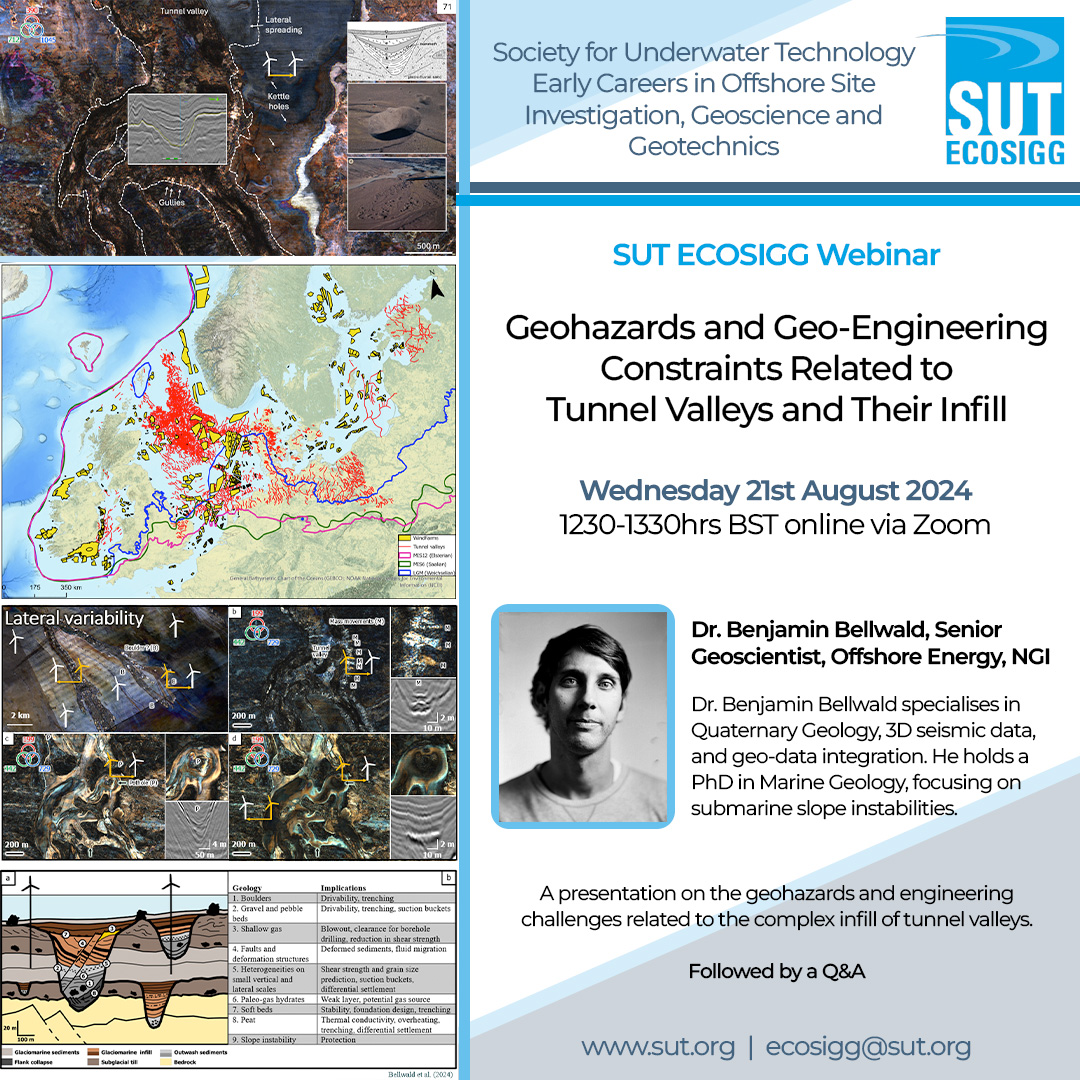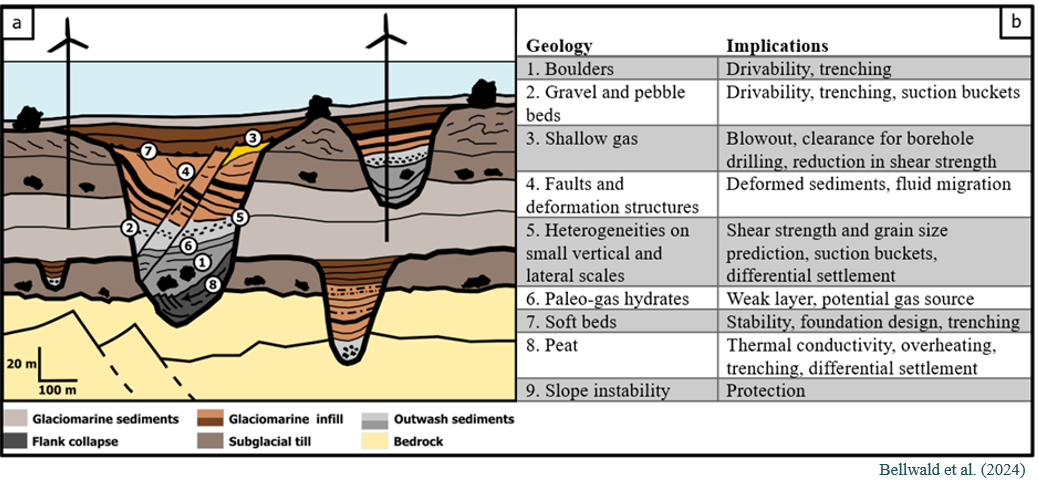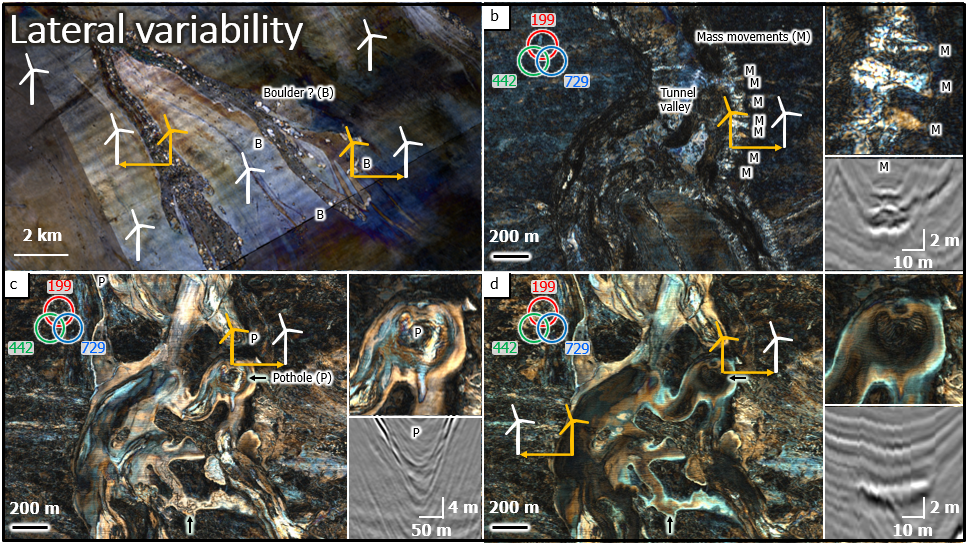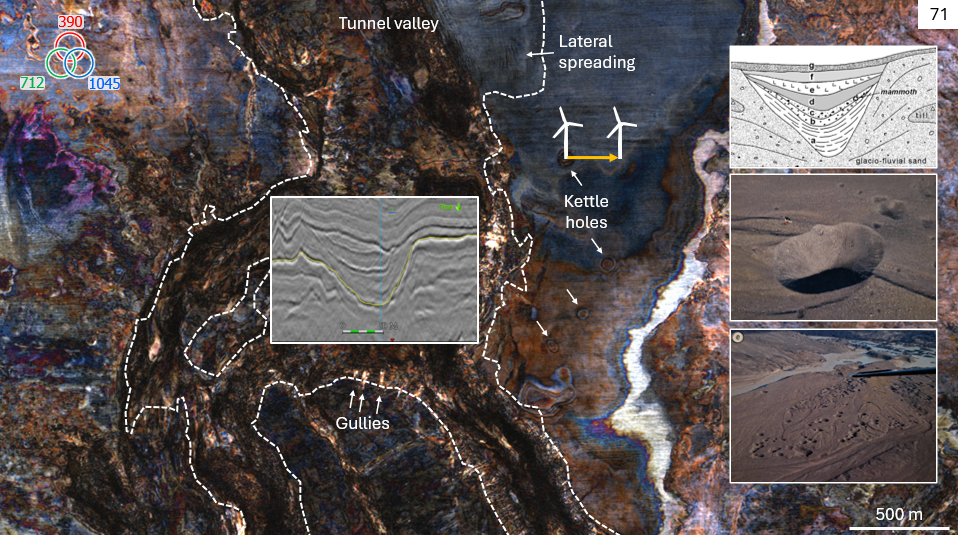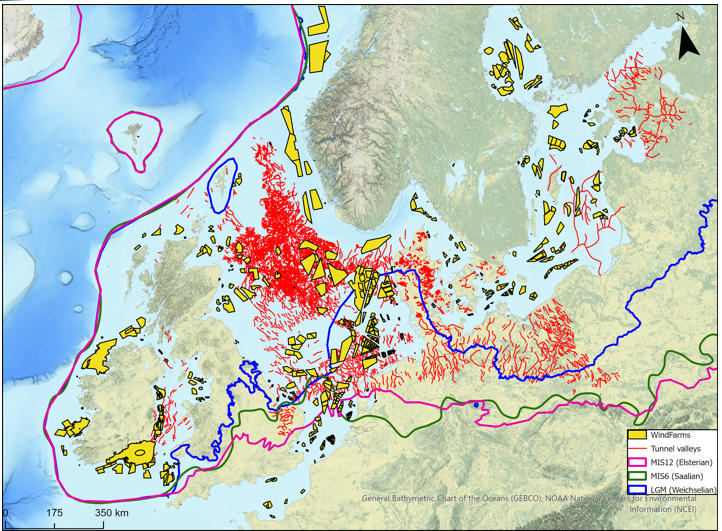ECOSIGG Webinar – Geohazards and Geo-Engineering Constraints Related to Tunnel Valleys and Their Infill
21 August, 2024
Wednesday 21st August | 1230-1330 BST
This is event is FREE to attend but booking is essential.
 Dr. Benjamin Bellwald, Senior Geoscientist, Offshore Energy, NGI
Dr. Benjamin Bellwald, Senior Geoscientist, Offshore Energy, NGI
Benjamin Bellwald works as a Senior Geoscientist in Offshore Energy at NGI and has a strong background in both offshore energy projects and R&D activities. He is an expert in Quaternary Geology, ultra-high-resolution 3D seismic data interpretation, and geo-data integration, working towards robust and data-driven ground models. Benjamin holds a PhD in Marine Geology and Geophysics from University of Bergen, with a focus on submarine slope instabilities. He has been working on geohazards in most sectors of the formerly glaciated European margin, and co-chairs the Wind Energy community of EAGE.
Tunnel valleys are geomorphological expressions of subglacial origin that commonly occur at multiple levels in the shallow subsurface of (formerly) glaciated margins. The origins of the valleys are linked to individual geological events and therefore include a variety of geotechnical properties that are a challenge for marine engineering and development projects. Here, we discuss the geohazards and engineering challenges related to the complex infill of tunnel valleys. Tunnel-valley infill consists of vertically extremely heterogenous sediments, with grain sizes varying from fine-grained clay to boulders, and the sediments are occasionally charged with shallow gas. Ultra-high-resolution 3D and ultra-high-resolution 2D seismic data combined with geophysical, geotechnical and geological analyses permits lateral and vertical characterization of the sediments. Our work reveals that tunnel-valley infill of the same generation, and at the same stratigraphical level, can significantly vary on relatively small lateral scales, and that the infill of one valley cannot always be correlated to its neighbouring valley. Therefore, each location has to be treated with caution.
